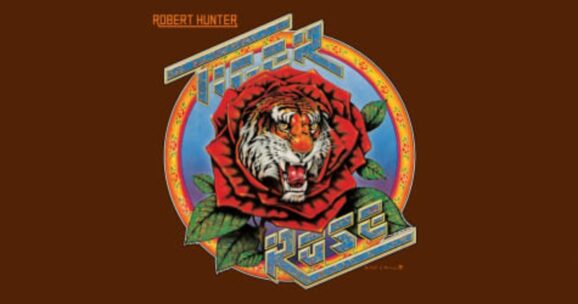By the time the Grateful Dead signed with Arista Records, their foray into independent record-making had left them almost as frustrated as their dealings with their initial major label Warner Bros. Granted, their eponymous imprimatur was in operation at about the same time as another massive creative/business effort, the legendary ‘Wall of Sound, but it wasn’t only the financial drain but the psychic drag that compelled these psychedelic warriors to opt for collaboration with the early hit-making home of Air Supply and Alan Parsons (and later on Whitney Houston).
Perhaps also it was Patti Smith and Lou Reed’s residence under former Columbia Records czar Clive Davis that convinced them their efforts would not go for naught. And they didn’t as, a decade later, “Touch of Grey” delivered the Dead their sole mainstream hit, MTV-video friendly and all. But first, the iconic West Coast group had to endure the simultaneously rigid and arbitrary working conditions under label-designated producer Keith Olsen, whose cachet at the time was based on recent forays in the studio with then mega-successful Fleetwood Mac early in their Buckingham-Nicks era. What resulted, unfortunately, was an abysmal mismatch of cross-purposes.
It’s one of the greatest ironies in Grateful Dead History that the group’s partnership with Arista began with one of the greatest travesties of their studio-recording career. Stories of fledgling artists surrendering creative control to their labels are hardly apocryphal narratives, but the backstory of Terrapin Station (released 7/27/77) begs the question of the Dead’s ambition as well as their relationship with Davis’ mercenary enterprise. Certainly the opening cut, “Estimated Prophet,” indicates there’s nothing wrong with the sumptuous depth and richness of the audio mix, so the group in conjunction with Olsen and engineer Dave DeVore, did preserve an indispensable attribute of their music in that respect.
But even if saxophonist Tom Scott’s own brand of instrumental anonymity couldn’t undermine the track, the disco-influenced rhythms of the times certainly tainted an exhumation from the Grateful Dead repertoire circa 1966, Martha & The Vandellas’ Motown hit “Dancing In the Streets.” Further telling of the Dead’s engagement with this endeavor (or lack thereof) is that the one other original song here besides the title number (and bassist Phil Lesh’s simultaneously under-developed but over-complicated “Passenger”) is vocalist Donna Jean Godchaux’ “Sunrise:” it certainly provides an atmospheric segue to the side-long title suite, but the effect prevails in part too because this cut appears after–and contrasts effectively with–the rowdy likes of Bob Weir fronting a randy take on the Rev. Gary Davis’ “Samson & Delilah.”
It’s indicative of the misaligned conception and execution of this record that Jerry Garcia’s familiar voice isn’t clearly heard ’til the ambitious, multi-part “Terrapin Station.” Yet even then, the inviting tones of his vocal encounter multiple challenges, not only in an overly-wordy and unusually convoluted set of lyrics from the late otherwise great wordsmith Robert Hunter, but also in Paul Buckmaster’s lush arrangement of The Martyn Ford Orchestra. The addition of The English Choral singers only further muddles the impact of the piece itself, thus rendering the action of the band itself almost incidental. The heavy-handed production values were no small point of contention between the Dead and Olsen, a negative environment exacerbated by the latter’s late-in-the-process substitution of a quasi-symphonic segment in place of a percussion/guitar interval, without prior knowledge of the group.
Of course, in retrospect, submitting a single composition that would eventually fill an entire side of the LP seems like the Grateful Dead’s own means of surreptitiously undermining the crass commercial ambitions of the label founder via his designated producer. Ultimately though, the toxic dynamic was a power struggle for control of the album’s final identity, an especially pointless battle-of-the-wills given the fact that, in later live performances, the band imbued the title-piece with a genuine majesty that at once highlighted the intricacy of the composition as well as the musicians’ collective finesse.
Given the mixed results arising from the Grateful Dead’s tenure on Arista, it almost boggles the mind that Terrapin Station is not the weakest of their studio efforts for the label. That distinction applies to 1980’s Go To Heaven, its release followed (probably not coincidentally), by the live albums Reckoning and Dead Set (another concert collection Without A Net arrived a decade later to effectively complete contractual obligations). However much the Grateful Dead may have wondered how to elevate their popularity during the first two decades of their existence, the band never exerted so overt an effort to do so on their own terms, most probably because they didn’t really know how to gauge the mainstream (the aforementioned breakthrough ten years after this album would appear more or less than accidental).
The Grateful Dead’s Arista Records debut did serve a certain purpose, however, as it added some durable entries into the group’s live repertoire, most notably Weir’s spotlights, in addition to the seven-part suite that gave the LP its name. Still, with nearly half a century hindsight, the ninth studio project by these inveterate iconoclasts is like most such collections, just one more means to a greater end; in that light, it’s no more or less an experiment than its predecessor, 1975’s Blues For Allah: recorded in Ace’s own studio and produced by the band itself, this final independent outing was the group’s highest charting title until their ‘hit,’ a unique perspective to be sure, especially when viewed through the prism that is Terrapin Station.












